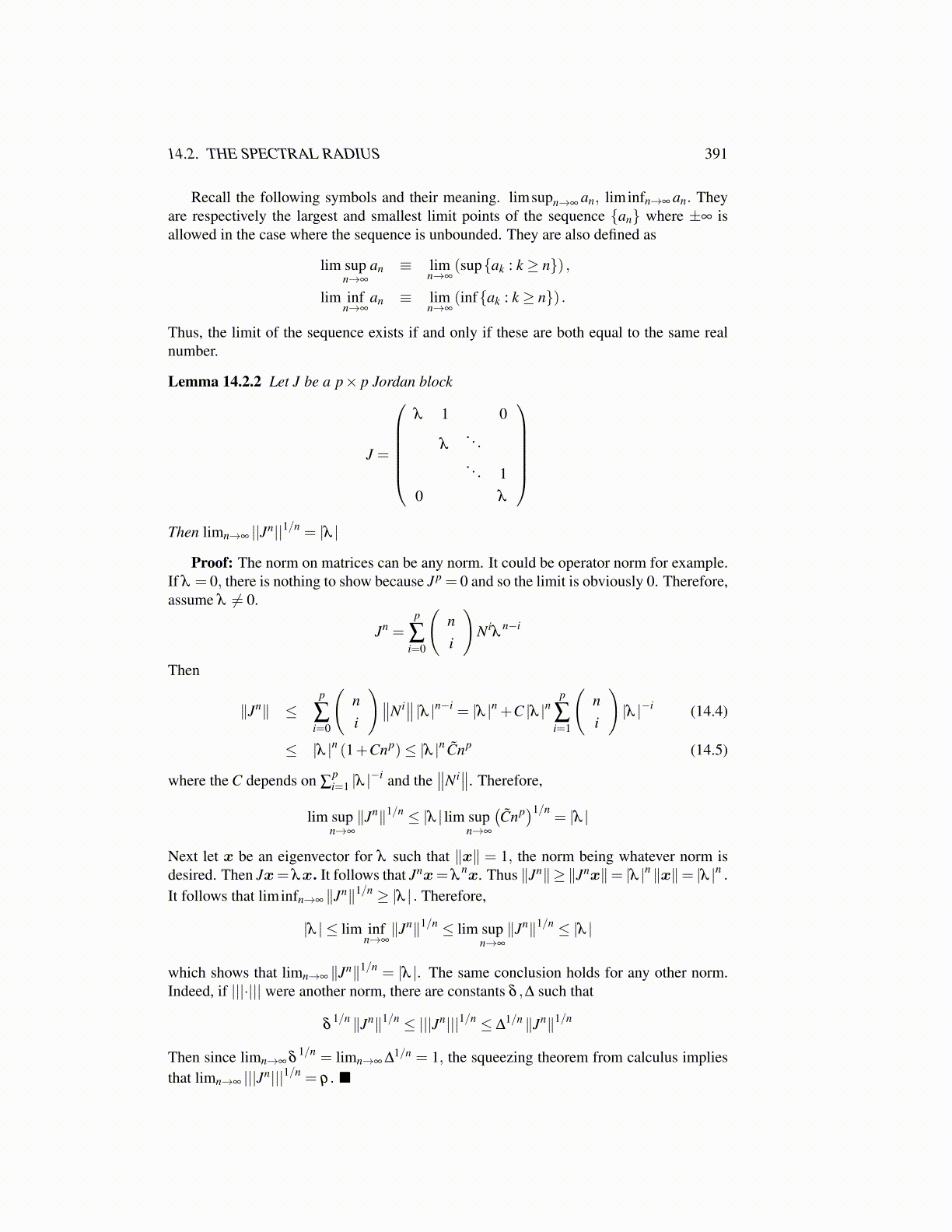
14.2. THE SPECTRAL RADIUS 391
Recall the following symbols and their meaning. limsupn→∞ an, liminfn→∞ an. Theyare respectively the largest and smallest limit points of the sequence {an} where ±∞ isallowed in the case where the sequence is unbounded. They are also defined as
lim supn→∞
an ≡ limn→∞
(sup{ak : k ≥ n}) ,
lim infn→∞
an ≡ limn→∞
(inf{ak : k ≥ n}) .
Thus, the limit of the sequence exists if and only if these are both equal to the same realnumber.
Lemma 14.2.2 Let J be a p× p Jordan block
J =
λ 1 0
λ. . .. . . 1
0 λ
Then limn→∞ ||Jn||1/n = |λ |
Proof: The norm on matrices can be any norm. It could be operator norm for example.If λ = 0, there is nothing to show because Jp = 0 and so the limit is obviously 0. Therefore,assume λ ̸= 0.
Jn =p
∑i=0
(ni
)Ni
λn−i
Then
∥Jn∥ ≤p
∑i=0
(ni
)∥∥Ni∥∥ |λ |n−i = |λ |n +C |λ |np
∑i=1
(ni
)|λ |−i (14.4)
≤ |λ |n (1+Cnp)≤ |λ |n C̃np (14.5)
where the C depends on ∑pi=1 |λ |
−i and the∥∥Ni∥∥. Therefore,
lim supn→∞
∥Jn∥1/n ≤ |λ | lim supn→∞
(C̃np)1/n
= |λ |
Next let x be an eigenvector for λ such that ∥x∥ = 1, the norm being whatever norm isdesired. Then Jx= λx. It follows that Jnx= λ
nx. Thus ∥Jn∥≥ ∥Jnx∥= |λ |n ∥x∥= |λ |n .It follows that liminfn→∞ ∥Jn∥1/n ≥ |λ | . Therefore,
|λ | ≤ lim infn→∞∥Jn∥1/n ≤ lim sup
n→∞
∥Jn∥1/n ≤ |λ |
which shows that limn→∞ ∥Jn∥1/n = |λ |. The same conclusion holds for any other norm.Indeed, if |||·||| were another norm, there are constants δ ,∆ such that
δ1/n ∥Jn∥1/n ≤ |||Jn|||1/n ≤ ∆
1/n ∥Jn∥1/n
Then since limn→∞ δ1/n = limn→∞ ∆1/n = 1, the squeezing theorem from calculus implies
that limn→∞ |||Jn|||1/n = ρ . ■